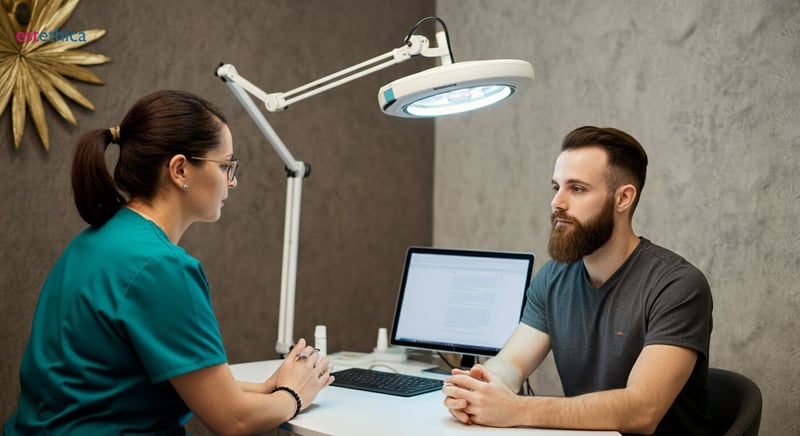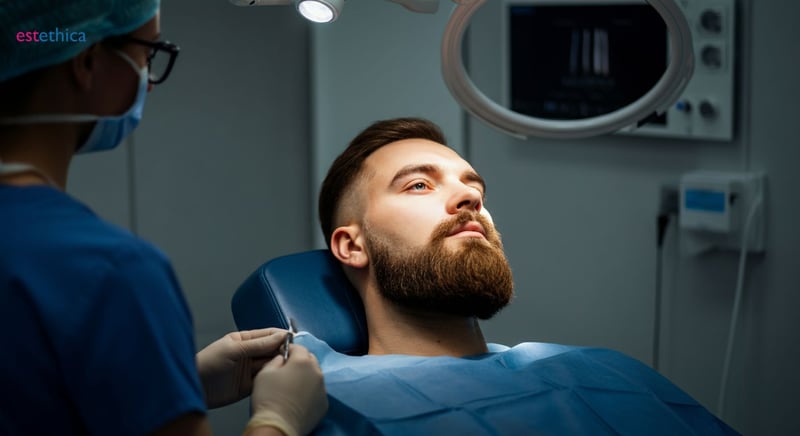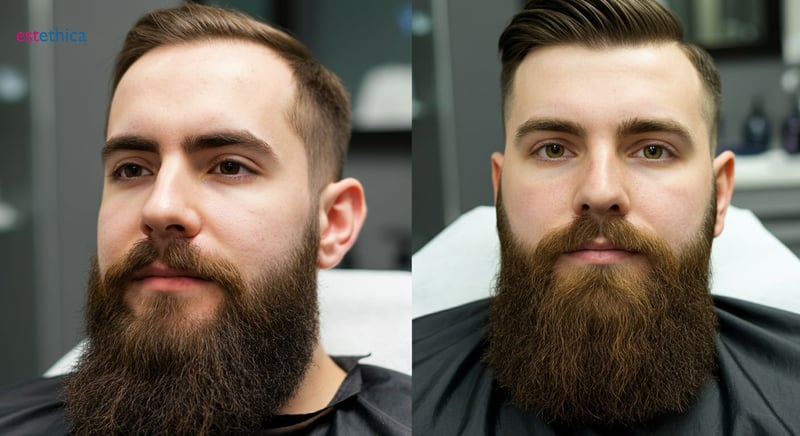Unlocking the Secrets of Beard Transplant Success
Transform your facial hair with advanced beard transplant techniques and expert guidance for a fuller, natural look.
The journey to a perfect beard is not just about genetics or grooming; for many, a beard transplant can be a revolutionary step to achieving the desired facial hair aesthetics. This blog delves into various aspects of beard transplants, from the latest techniques to aftercare tips, ensuring optimal results and high satisfaction. Whether you're dealing with patchy facial hair or seeking to enhance your beard's density, understanding the nuances of beard transplantation can make all the difference.
Understanding Beard Transplant: What You Need to Know
Key Factors Influencing Beard Transplant Cost
Beard transplant costs can vary significantly based on several factors. The complexity of the procedure, the number of grafts required, and the expertise of the surgeon all play crucial roles. Additionally, the location of the clinic can impact the overall cost. For instance, clinics in major cities might charge more due to higher operational costs. Understanding these factors can help you make informed decisions when considering a beard transplant.
Important Considerations for Choosing a Beard Transplant Clinic
- Reputation: Look for clinics with positive reviews and successful case studies.
- Experience: Choose a clinic with experienced surgeons specializing in facial hair restoration.
- Technology: Opt for clinics using the latest beard transplant techniques for optimal results.
Choosing the right clinic is essential for achieving the desired outcome. A reputable clinic with experienced professionals can ensure a safer and more effective procedure.
Steps in the Beard Transplant Process
- Consultation: Discuss your goals and assess your facial hair pattern with a specialist.
- Harvesting: Hair follicles are extracted from the donor area, typically the scalp.
- Implantation: The follicles are carefully implanted into the beard region to match your natural hair growth.
Each step in the process is crucial for ensuring a natural-looking result. For more detailed insights, you can explore Unlocking the Secrets of Beard Transplantation: A Comprehensive Guide.

Exploring the Latest Beard Transplant Techniques
Innovative Techniques in Beard Transplantation
Beard transplantation has evolved significantly with techniques like FUE (Follicular Unit Extraction) and DHI (Direct Hair Implantation) leading the way. These methods are renowned for their precision and ability to minimize scarring, offering a more natural appearance. For instance, FUE involves extracting individual hair follicles, which are then implanted into the beard area, ensuring a seamless blend with existing facial hair. DHI, on the other hand, uses a specialized tool to implant hair directly, allowing for greater control over the angle and direction of hair growth.
Factors Influencing Beard Transplant Cost
- Technique Used: Advanced methods like DHI may influence overall costs.
- Surgeon's Expertise: Highly skilled surgeons might charge more for their services.
- Clinic Location: Clinics in urban areas often have higher operational costs.
Understanding these factors can help potential patients make informed decisions about their beard transplant journey.
Steps to Achieve Optimal Beard Transplant Results
- Consultation: Discuss desired outcomes and assess facial hair patterns with a specialist.
- Extraction: Hair follicles are carefully harvested from the donor area.
- Implantation: Follicles are strategically placed to mimic natural hair growth.
Each step is crucial for achieving a natural and aesthetically pleasing result, ensuring patient satisfaction and confidence in their new look.

Choosing the Best Beard Transplant Surgeon
Evaluating Surgeon Expertise and Credentials
When selecting a beard transplant surgeon, it's essential to evaluate their expertise and credentials. A surgeon with a proven track record in facial hair restoration can significantly impact the success of your procedure. For instance, a surgeon who has performed numerous successful beard transplants is likely to have refined their technique, ensuring optimal results. Additionally, board certification in hair restoration or related fields can be a strong indicator of their proficiency and commitment to maintaining high standards.
Key Considerations for Choosing a Surgeon
- Experience: Look for surgeons with extensive experience in beard transplants.
- Specialization: Choose a surgeon who specializes in facial hair restoration.
- Reputation: Consider surgeons with positive reviews and a strong reputation in the field.
These factors can help ensure that you select a surgeon who is well-equipped to deliver the desired aesthetic outcome.
Steps to Assessing Surgeon Suitability
- Research: Investigate the surgeon's background, training, and experience.
- Consultation: Schedule a consultation to discuss your goals and evaluate their approach.
- Review: Examine before-and-after galleries and patient testimonials for insight into their work.
Following these steps can provide a comprehensive understanding of the surgeon's capabilities, helping you make an informed decision.

Beard Transplant Aftercare: Tips for Optimal Results
Essential Aftercare Practices for Beard Transplants
Proper aftercare is crucial for ensuring the success of a beard transplant. Immediately following the procedure, patients should adhere to specific care routines to promote healing and graft stability. For instance, gently washing the face with a mild cleanser helps prevent infection without disturbing the grafts. Additionally, avoiding direct sunlight and harsh winds can protect the sensitive transplanted area.
Key Steps for Post-Transplant Care
- Initial Care: Keep the transplanted area clean and avoid touching it unnecessarily.
- Hydration: Drink plenty of water to support overall skin health and recovery.
- Follow-up: Attend all scheduled follow-up appointments to monitor progress.
These steps are vital for ensuring the transplanted hair follicles remain healthy and integrate seamlessly with existing facial hair.
Common Mistakes to Avoid After a Beard Transplant
- Excessive Scratching: Avoid scratching the beard area to prevent dislodging grafts.
- Heavy Exercise: Refrain from intense physical activities that may cause sweating and irritation.
- Skipping Medications: Ensure all prescribed medications are taken as directed to aid recovery.
Avoiding these common pitfalls can significantly enhance the success of the transplant, leading to a fuller and more natural-looking beard.
Innovative Beard Transplant Techniques: FUE and DHI
Comprehensive Beard Transplant Process for Optimal Results
Frequently Asked Questions
What is a beard transplant and how does it work?
How do I choose the best beard transplant surgeon?
What are the latest beard transplant techniques?
What aftercare is required following a beard transplant?
Is a beard transplant permanent?
Discover the path to your healthiest and most beautiful self with estethica's award-winning services. Call now for a free consultation and let our expert team guide you towards your aesthetic goals.
📞 Call for Your Free Consultation Today!